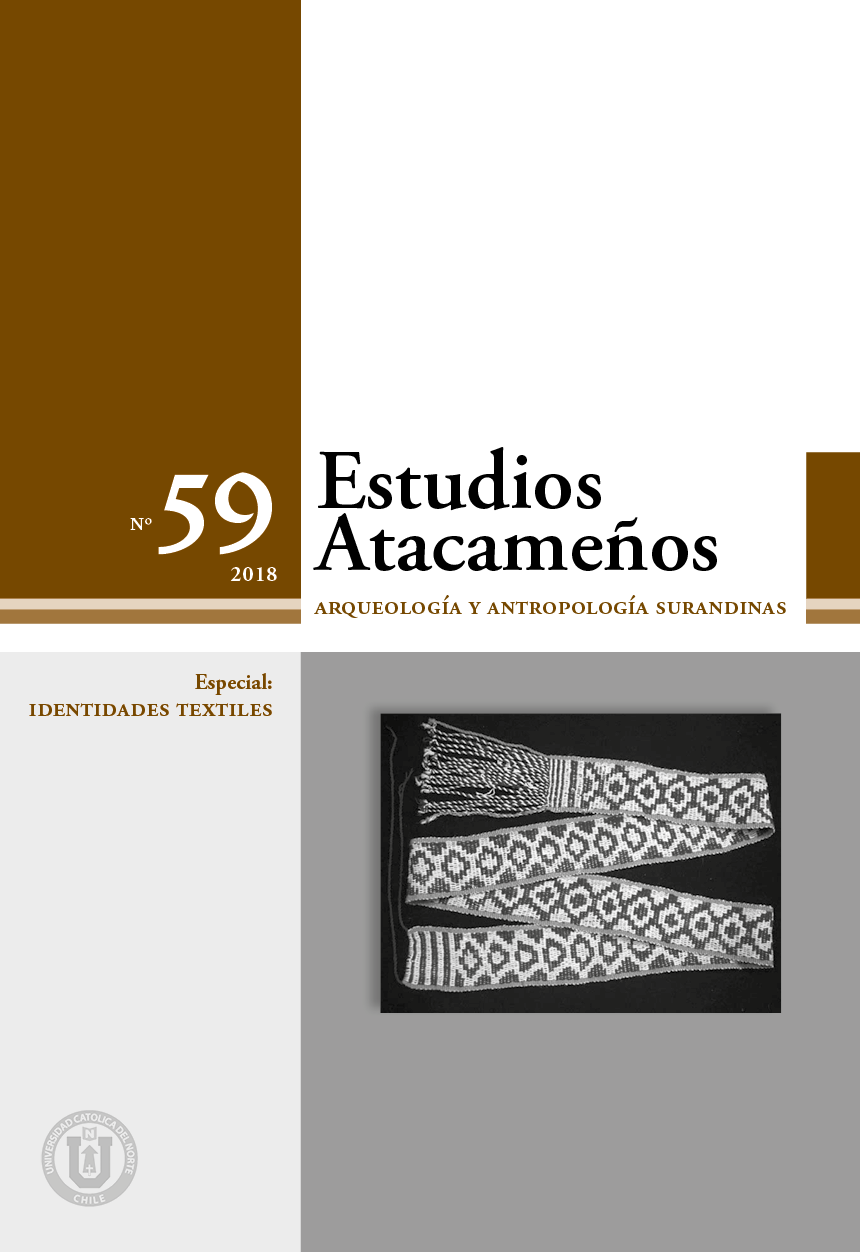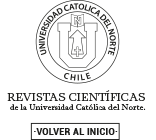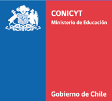Cambios en la vestimenta indígena en el altiplano andino bajo el colonialismo español
Palabras clave:
período colonial, indigenismo, género, vestimenta, AndesResumen
El presente artículo delinea una aproximación a la cultura material que combina perspectivas teóricas de intercambio de valor y el cuerpo político basado en el género sexual. Se aplica este marco teórico a tres elementos de los cambios del vestido en el periodo colonial temprano (ca. D.C. 1532-1825) de Sudamérica. Se examina el impacto de las políticas públicas españolas, el papel de los géneros y los conceptos sobre la sociedad para el fleco maskaypacha, la forma y las decoraciones de las túnicas masculinas unku incas, y el manto femenino lliklla. Se argumenta que los cambios en el vestuario indígena se limitan principalmente a los hombres del periodo colonial temprano, el cual es un reflejo de la naturaleza del cuerpo político español basado en el género sexual. Esta lectura de los cambios en la cultura material de la vestimenta indígena provee un modelo práctico para analizar las categorías de género de los símbolos políticos indígenas y su vestuario.
Citas
Barrkman, J. (2006). Symbols of power and life: Indian trade textiles and their inclusion into the ritual practices of headhunting and ceremonial houses by the Atoin Meto of West Timor. En S. Kleinert (Ed.), Crossing cultures: Art, politics, and identity (pp. viii–xiv). Darwin NT, Australia: Charles Darwin University Press.
Canessa, A. (2000). Contesting hybridity: Evangelistas and kataristas in highland Bolivia. Journal of Latin American Studies, 32, 115–147.
Cieza de León, P. ([1551] 1959). The Incas, V. Wolfgang von Hagen (Ed.), H. de Onis (Trans.). Norman: University of Oklahoma Press.
Cobo, B. ([1653] 1990). Inca religion and customs (trans. and ed. R. Hamilton). Austin: University of Texas Press.
Cooksey, S. (2011). Bark and raffia cloth: Interpreting indigenous prestige. En S. Cooksey (Ed.), Africa interweave: Textile diasporas (pp. 107-112). Gainesville: Samuel P. Harn Museum of Art, University of Florida.
Covey, R. A. (2006). Chronology, succession, and sovereignty: The politics of Inka historiography and its modern interpretation. Comparative Studies in Society and History, 48(1), 169-199.
Craik, J. (1994). The face of fashion: Cultural studies in fashion. New York: Routledge.
Cummins, T. B. F. (1991). We are the other: Peruvian portraits of Colonial Kurakakuna. En K. Andrien & R. Adorno (Eds), Transatlantic empires: Europeans and Andeans in the sixteenth century (pp. 203–232). Berkeley: University of California Press.
Cummins, T. B. F. (2002). Toasts with the Inca: Andean abstraction and colonial images on quero vessels. Ann Arbor: University of Michigan Press.
Cúneo-Vidal, R. (1925). Historia de las guerras de los ultimos Incas Peruanos contra el poder Español. Barcelona: Casa Editorial Maucci.
Dean, C. (1999). Inka bodies and the body of Christ: Corpus Christi in colonial Cuzco, Peru. Durham: Duke University Press.
de Areche, J. A. (1836). Setencia pronunciada en el Cuzco por el Visitador D. José Antonio de Areche, contra José Gabriel Tupac-Amaru, su mujer, hijos, y demás reos principales de la sublevación. En P. de Angelis (Ed.), Documentos para la historia de la sublevación de José Gabriel de Tupac-Amaru, cacique de la provincia de Tinta, en el Perú (pp. 44–51). Buenos Aires: Imprenta del Estado.
de Xerez, F. ([1534] 1985). Verdadera relación de la conquista del Perú. Concepción Bravo, Crónicas de America (Eds.), no. 14. Historia 16, Madrid.
Guaman Poma de Ayala, F. ([1615] 1980). El primer nueva corónica y buen gobierno, J. V. Murra & R. Adorno (Eds.), Jorge L. Urioste (Trans.), vol. 2(3). Mexico: Siglo Veintiuno.
Hall, S. (1990). Cultural identity and diaspora. En J. Rutheford (Ed.), Identity: Community, culture and difference (pp. 222–237). London: Lawrence and Wishart.
Hogue, M. (2006). Cosmology in Inca tunics and tectonics. En M. Young-Sanchez & F. W. Simpson (Eds.), Andean textile traditions: Papers from the 2001 Mayer center symposium at the Denver art museum (pp. 100–119). Denver: Denver Art Museum.
Hunt, L. (1984). Politics, culture and class in the French revolution. Berkeley: University of California Press.
Iriarte, I. (1993). Las túnicas incas en la pintura colonial. En H. Urbano (Ed.), Mito y simbolismo en los Andes: La figura y la palabra (pp. 53–86). Cuzco: Centro de Estudios Regionales Andinos ‘Bartolomé de Las Casas’.
Kellogg, S. (1992). Hegemony out of conquest: The first two centuries of Spanish rule in central Mexico. Radical History Review, 53, 27–46.
Kellogg, S. (2005). Weaving the past: A history of Latin America’s indigenous women from the pre-Hispanic period to the present. Oxford: Oxford University Press.
Kleinert, S. (Ed.) (2006). Introduction. En Crossing cultures: Art, politics, and identity (pp. viii–xiv). Darwin NT, Australia: Charles Darwin University Press.
Kopytoff, I. (1986). The cultural biography of things: Commoditization as process. En A. Appadurai (Ed.), The social life of things (pp. 64–91). Cambridge: Cambridge University Press.
Kuchta, D. (1996). The making of the self-made man: Class, clothing, and English masculinity, 1688–1832. En V. de Grazia & E. Furlough (Eds), The sex of things: Gender and consumption in historical perspective (pp. 54–78). Berkeley: University of California Press.
Maynard, M. (2002). Blankets: The visible politics of indigenous clothing. En W. Parkins (Ed.), Fashioning the body politic: Dress, gender, citizenship (pp. 189–204). Oxford: Berg.
Meisch, L. A., & Rowe, A. P. (1998). Indigenous Ecuadorian costume. En A. P. Rowe (Ed.), Costume and identity in highland Ecuador (pp. 39–49). Washington, D.C.: The Textile Museum.
Milton, J., Orsi, R. & Harrison, N. (1986). The serpent and the robe: The pre-Colombian god-kings; The papal states. Boston: Boston Publishing.
Montell, G. (1929). Dress and ornament in ancient Peru: Archaeological and historical studies. Göteborg, Sweden: Elanders Boktryckeri Aktiebolag.
Murra, J. (1962). Cloth and its functions in the Inca state. American Anthropologist, 64, 710–728.
Parkins, W. (2002). Introduction: (Ad)dressing citizens. En W. Parkins (Ed.), Fashioning the body politic: Dress, gender, citizenship (pp. 1–17). Oxford: Berg.
Pillsbury, J. (2002). Inca unku: Strategy and design in Colonial Peru. Cleveland Studies in the History of Art, 7, 68–103.
Pillsbury, J. (2006). Inca-Colonial tunics: A case study of the Bandelier set. En M. Young-Sanchez & F. W. Simpson (Eds.), Andean textile traditions: Papers from the 2001 Mayer center symposium at the Denver art museum (pp. 122–168). Denver: Denver Art Museum.
Pizarro, P. ([1571] 1944). Relación del descubrimiento y conquista de los reinos del Perú y del gobierno y orden que los naturales tenían, y tesoros que en ella se hallaron, y de las demás cosas que en él han subcedido hasta el día de la fecha. Buenos Aires: Editorial Futuro.
Robinson, N. V. (1987). Mantones de Manila: Their role in China’s silk trade. Arts of Asia, 17, 65–75.
Romero, C. A. (1923). Festividades del tiempo heróico del Cuzco. Inca, 1, 447–454.
Rowe, A. P. (1978). Technical features of Inca tapestry tunics. Textile Museum Journal, 17, 5–28.
Rowe, A. P. (1984). Costume under the Inca empire. En A. P. Rowe (Ed.), Costume and history in highland Ecuador (pp. 84–95). Austin: University of Texas Press.
Rowe, J. H. (1954). El movimiento national Inca del siglo XVIII. Revista Universitaria, 43, 17–47.
Salomon, F. (1987). Ancestor cults and resistance to the state in Arequipa, ca. 1748–1754. En S. J. Stern (Ed.), Resistance, rebellion, and consciousness in the Andean peasant world, 18th to 20th centuries (pp. 148-165). Madison: University of Wisconsin Press.
Schneider, D. (2007). La mama negra–¿Símbolo de la multiculturalidad ecuatoriana?. Indiana, 24, 157–71.
Weismantel, M. (2001). Cholas and pishtacos: Stories of race and sex in the Andes. Chicago: University of Chicago Press.
Publicado
Cómo citar
Número
Sección

Todos los trabajos publicados en Revista Estudios Atacameños (eISSN:0718-1043) están sujetos a una licencia Creative Commons Reconocimiento 4.0 Internacional
Los autores continúan como propietarios de sus trabajos, y pueden volver a publicar sus artículos en otro medio sin tener que solicitar autorización, siempre y cuando indiquen que el trabajo fue publicado originariamente en Revista Estudios Atacameños (eISSN:0718-1043).

















